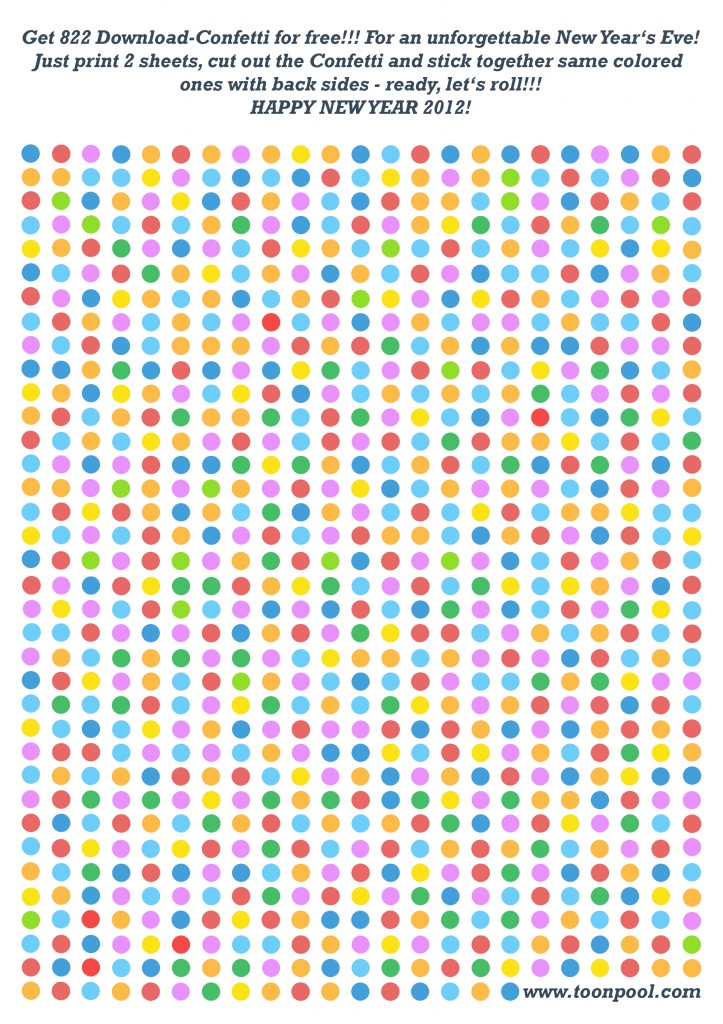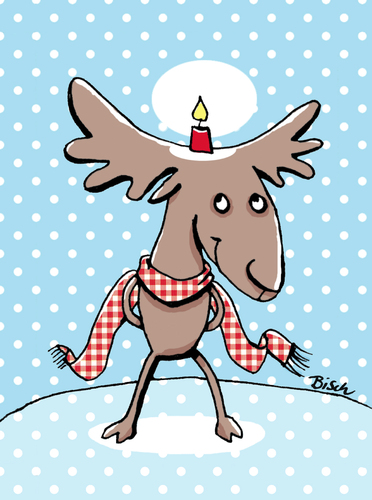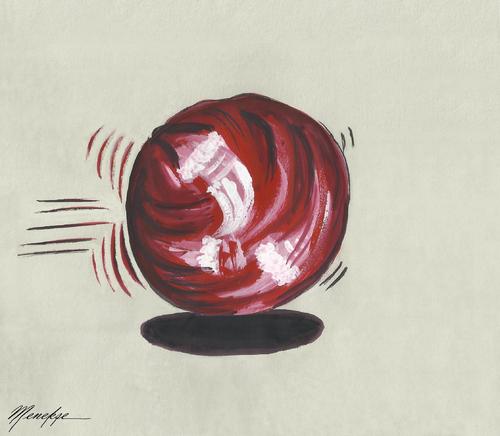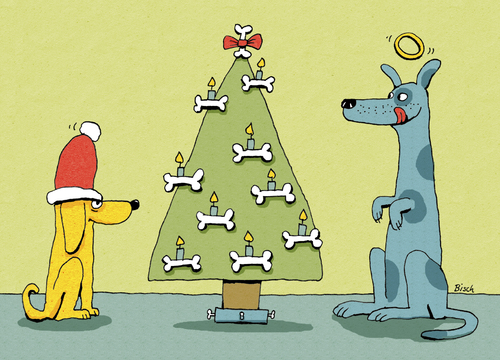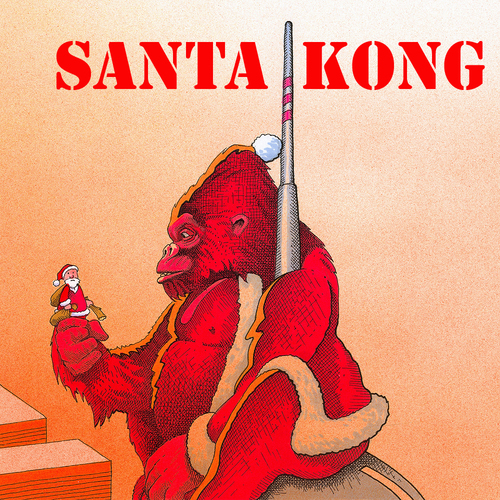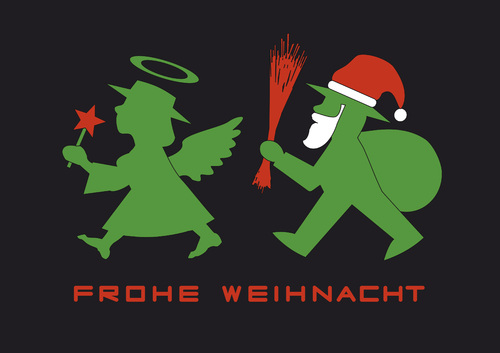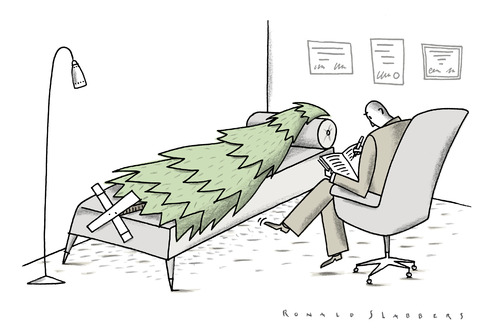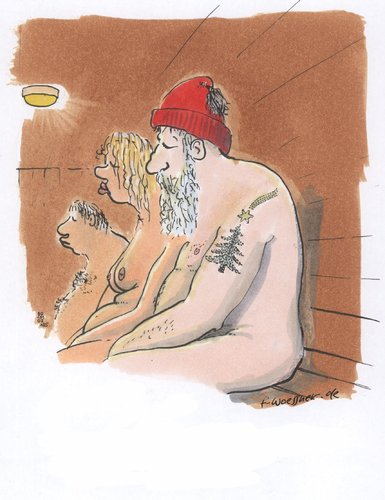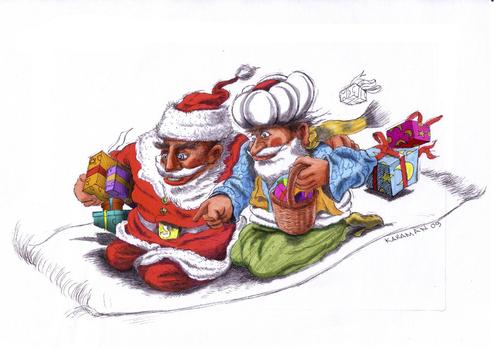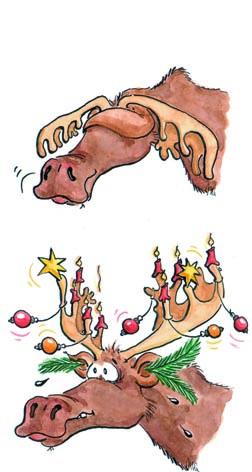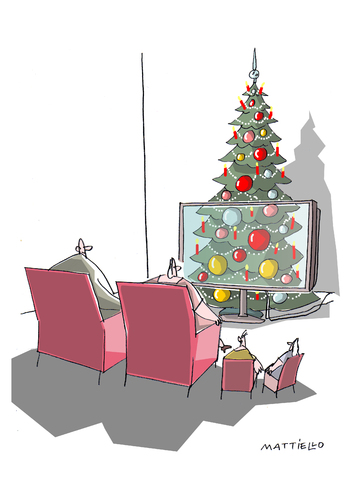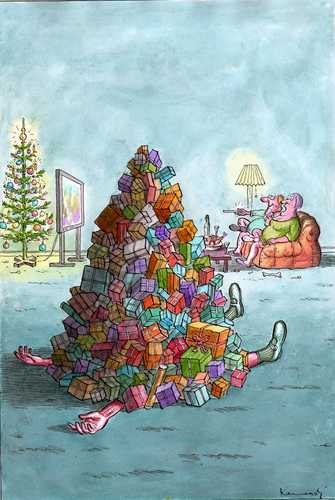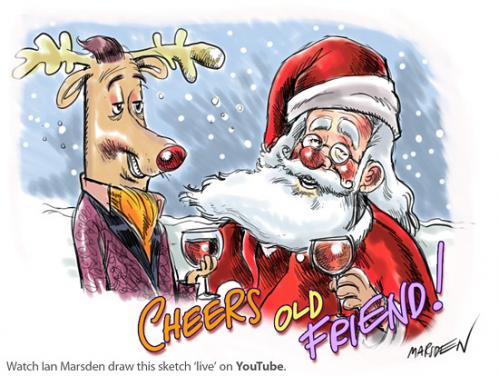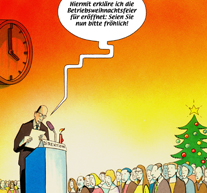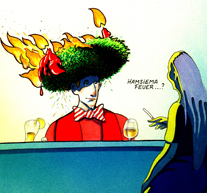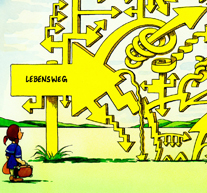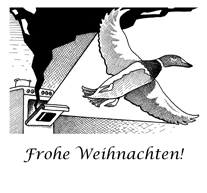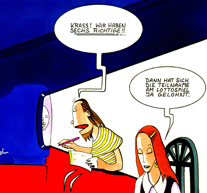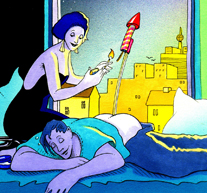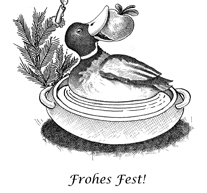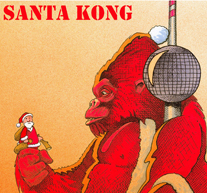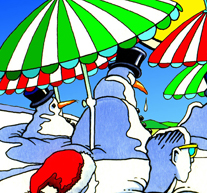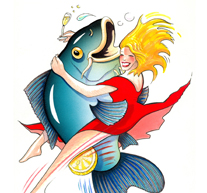]]>
Here some cartoons and illustrations to enjoy! More Christmas art you can find in the Christmas Collection.
]]>
Klicken Sie bitte auf ein Motiv um die Vorlage (PDF) herunterzuladen.
]]>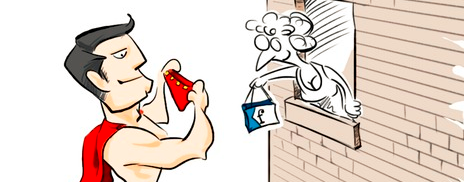
Every now and then I will stumble upon a cartoon I simply don’t get. At times I can stare at it for quite a long and still not get it. Some time ago I heard about Bill Bickel’s blog Comics I Don’t Understand. On CIDU he posts newspaper strips and webcomics that he, well, does not understand. Of course I had to ask for his expertise.
Since I didn’t bookmark the cryptic cartoons I had found in the past, I had to browse toonpool.com for some to illustrate this interview. Doing so I noticed two important differences I had to take in account: 1) We have a lot more illustrations and experimental cartoons, that aren’t meant to have a distinct meaning or gag in the first place 2) Several toonpool.com artists may post cartoons that are meant for an audience from their own culture. So.. the images I chose are cartoons I think I could be getting, i.e. cartoons that seem “international” and also look as if they have a simple meaning or punchline.
Bill, can you tell a bit about the history of the CIDU blog?
 I had — and still have — a friend named B. Joni who lives across the country. We wrote to one another frequently, and in years past we’d sometimes mail one another comic strips we didn’t understand. By 1994 we both had computers, and comics strips were starting to come online, so we were able to e-mail one another the comics. Brave New World!
I had — and still have — a friend named B. Joni who lives across the country. We wrote to one another frequently, and in years past we’d sometimes mail one another comic strips we didn’t understand. By 1994 we both had computers, and comics strips were starting to come online, so we were able to e-mail one another the comics. Brave New World!
But then she has to switch Internet Service Providers and could no longer receive e-mail attachments. I was already running a couple of web sites, and it occurred to me that if she couldn’t receive comics in the mail, I could start up an ad hoc web site just for the purpose of showing her the comics.
How did this become a public website?
Somewhere along the line, she passed along the address to some friends, who gave it to other friends, and at the same time I mentioned what I was doing to a kinsman and he passed along the address, and before long I was getting e-mail and comics from complete strangers.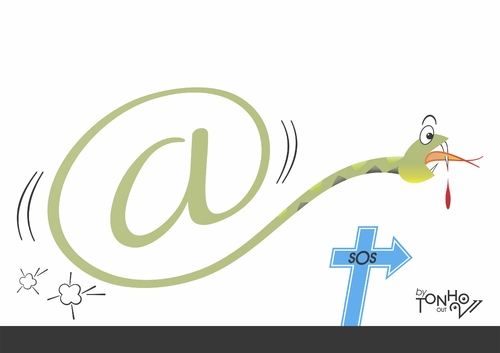
Then David Farley, whose “Doctor Fun” strip appeared frequently on CIDU, gave me a plug. Soon afterward the site was mentioned in the New York Times, and then in Entertainment Weekly’s “Must List” page – the same place my brother’s book Creepiosity got listed 14 years later, oddly enough.
Did you have any kind of cartoon/comic background before you started the page?
No background at all other than having read the comics since I was three or four. I can’t draw for shit. I did draw a comic once, though: to avoid failing a high school art class, I created a comic book – all of whose characters were constellations, so all I had to draw were combinations of white dots on black paper.
What, in your opinion, is the main cause for cryptic comics?
I’m not sure there’s a “main” cause, but here’s a partial list:
There are several instances of “This made sense to me when I thought of it at 3AM”. Then, there are gags based on regional knowledge the writer believes is universal. Or gags based on technical knowledge the writer believes is universal.
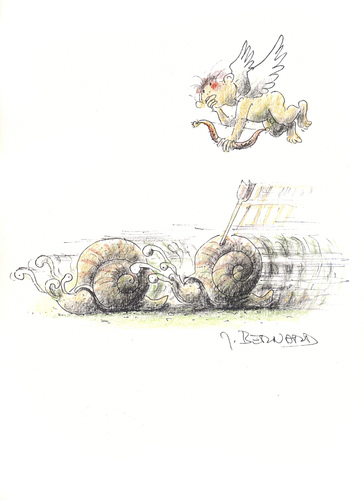 There are also those moments when a comic actually isn’t cryptic at all: it’s just plain not funny and I was looking for something that wasn’t there
There are also those moments when a comic actually isn’t cryptic at all: it’s just plain not funny and I was looking for something that wasn’t there
Sometimes the writer wanted to challenge his readers. Or he was being intentionally obscure to show off how clever he is. Then there are writers who are actually trying to get on CIDU.
And there are f***ing cats.
Wait.. how are cats a main cause of cryptic comics?
People have remarked – quite frequently and not without justification – that I simply don’t get any comics that involve cats.
In your FAQ you tell the original artists not to send in explanations. Is that something that actually does happen?
It did happen at first, before I added this to the FAQ. Still happens on occasion now, but invariably one of the regulars chastises the writer/artist before I ever see the comment. Self-policing communities; gotta love ‘em.
Dave Farley complains bitterly about this rule in his own FAQ, but it’s all in jest. The CIDU community misses Doctor Fun terribly.
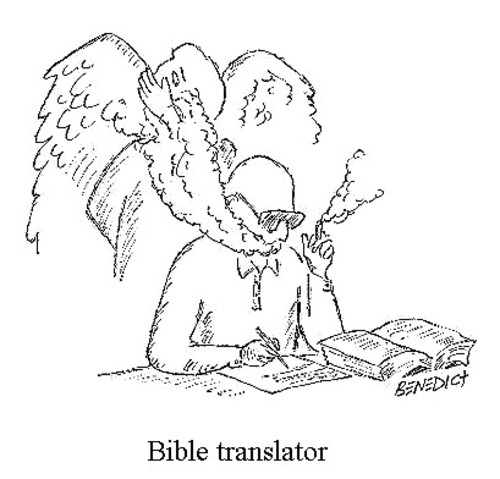 Have you ever had cartoons explained to you and then actually thought they were funny?
Have you ever had cartoons explained to you and then actually thought they were funny?
Of course.
You also post cartoons that are actually funny in addition to the ones you don’t understand. Why?
Out of respect for cartoonists. If I’m going to give them a hard time when they’re unclear, the least I can do is honor them when they really nail one. In the end, I’m a fan: I’d much rather appreciate a comic than be confused by one.
You have been collecting cartoons and reading other people’s attempts at explaining them for quite a while now. Has this changed your own perspective on cartoons in any way?
I don’t know, not really. I have gotten better at understanding how comics writers’ minds work. And I know a lot more than I used to about cats.
So, how DO comic writers’ minds work?
Like clockwork oranges.
Thanks for your time!
Title illustration: “Superman is Shopping” by Zenchip
]]>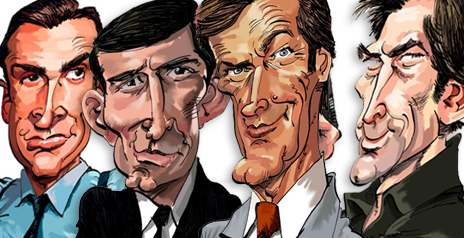 Sheffield-based artist Ian Baker has drawn gag cartoons for magazines like Reader’s Digest, Penthouse, or National Lampoon. He is also responsible for an amazing collection of caricatures based on characters from the twenty-two (or 23, 24, or maybe even 25) James Bond movies. If you are hoping for questions about the gag cartoons you will be disappointed.
Sheffield-based artist Ian Baker has drawn gag cartoons for magazines like Reader’s Digest, Penthouse, or National Lampoon. He is also responsible for an amazing collection of caricatures based on characters from the twenty-two (or 23, 24, or maybe even 25) James Bond movies. If you are hoping for questions about the gag cartoons you will be disappointed.Ian, I really like your Bond caricatures. What is it about James Bond that made you start this series?
I have alwa![]() ys been a fan of the James Bond films since I was a kid. In recent years I was involved in various Bond related projects, particularly in America, working with people who have had a long history working in the Bond universe on the film and literary side of things.
ys been a fan of the James Bond films since I was a kid. In recent years I was involved in various Bond related projects, particularly in America, working with people who have had a long history working in the Bond universe on the film and literary side of things.
I started working on a few caricatures for my own amusement really, but they soon started to get the attention of Bond fans around the world and before I knew it I was producing large numbers of these portraits.
I’ve been overwhelmed with the positive response I’ve had from Bond fans. The downside is that at one point MGM Studios in Hollywood threatened to sue me unless I stopped producing the artwork, but they backed down.
What kinds of Bond projects have you been working on?
 I was involved in a big project that unfortunately may not come to fruition now. I’m actually not allowed to talk about it, though. Seriously. Just like the real world of 007!
I was involved in a big project that unfortunately may not come to fruition now. I’m actually not allowed to talk about it, though. Seriously. Just like the real world of 007!
What’s your favorite Bond movie?
That’s a tricky one to answer; I love so many of them. I grew up in the Roger Moore era, and I loved all his films. Probably for his sense of humour and for the gadgets.
But I have to say that my favorite is probably Casino Royale. I thought the new Craig era brought with it a much grittier, down to earth feel that was right for modern times.
The new Casino Royale? Really?
Sure. The thing with Bond is that your favorite film can change depending on your age, or the way the world is at any particular time. When I was a kid I would say my favorite was probably The Spy Who Loved Me.
It’s still one of the very best, but back then, as a young kid, I was very impressed with gadgets, so that film fulfilled that. Right now I appreciate Bond being a much harder and more serious incarnation of the brand. I do think Daniel Craig is a very good actor, too. It’s funny but even though in real life I love technology and gadgets, what I want from Bond now is to not rely on them.
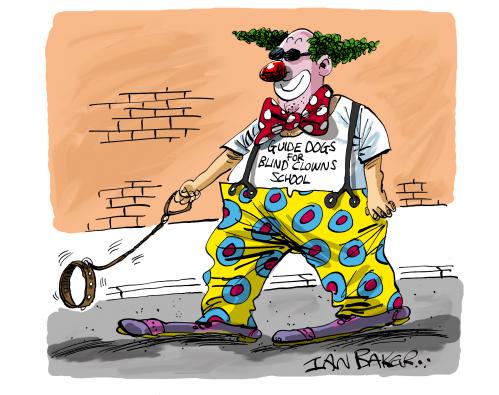 Is it getting harder to come up with Bond characters you haven’t done yet?
Is it getting harder to come up with Bond characters you haven’t done yet?
Not really, I’m not even half way through the collection. I actually get Bond fans emailing me requesting or suggesting particular characters to be added to the collection.
There have been a couple of Bond stars who, I’ve been told from my American sources, love the caricatures I’ve done of them – George Lazenby and Gloria Hendry. That’s so good to know.
There are still many characters that I need to do, some of them are major recurring characters too and it would be a huge oversight to not do them, so it will be a will be a while before I run out of steam with this project…Not forgetting of course that there is a new Bond film currently in production with all new characters to tackle.
How much time do your portraits usually take?
I work very quickly and seem to have a bit of a reputation for speed now. It varies. On average the black ink line work takes about five to ten minutes,and then I’ll add color
I might spend anything from 20 minutes to a few hours depending on its complexity.
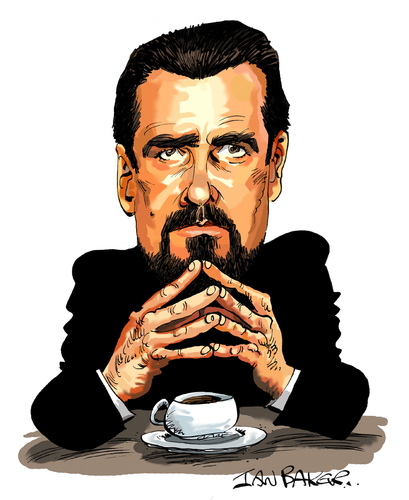 The fact that you are working so fast makes me wonder.. did you ever work as a street caricaturist?
The fact that you are working so fast makes me wonder.. did you ever work as a street caricaturist?
No, never. And I have never really seen myself as a caricaturist to be honest. I do caricatures when asked to, but it’s not my main area. I think nerves put me off doing live caricatures. Also, I prefer not to let the public see work that I’m not happy with… and doing that kind of work inevitable leads to work I am not proud of.
I greatly admire live caricaturists. Many of them seem to be able to hit a likeness straight away, every time, and that takes confidence. Unfortunately also, on a business level, I do feel that live street caricaturists are not paid what they deserve to be paid.
These days a new book of yours is coming out. Can you tell a bit about it?
It’s called “The Codgers’ Kama Sutra”. It’s in fact mainly a written book, which has a few cartoon illustrations scattered throughout it. I have worked a fair amount over the years as a comedy writer, and I wanted to do a book where I could showcase writing skills and let the cartoon side take a back seat.
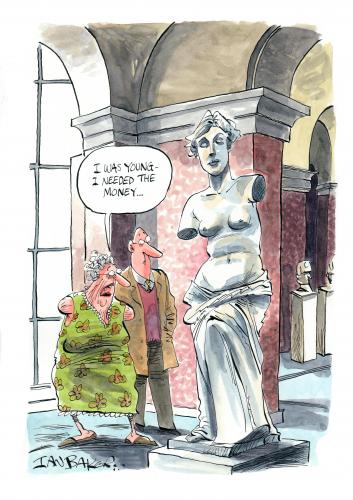 How did you end up with the idea for the book? You don’t seem that old..
How did you end up with the idea for the book? You don’t seem that old..
I’ve illustrated many books, written by other people, which are aimed at an older market – Mainly gift books that gently poke fun at people’s ages. I always wanted to write a similar book but with much more extreme, edgy humor.
I think a concept like the Kama Sutra is a gift for a satirist. Once I’d finished writing and illustrating it, it took a couple of years before I landed a publishing deal. Most publishers who saw the book found it to be a little bit too rude for their humor ranges.
Ultimately I submitted Codgers’ to Constable & Robinson in London, one of the oldest and most respected publishing houses in Europe, and I was delighted when they offered me a deal. A year on from signing the contract, I now have an advance copy of the book in my hands and look forward to the release of the book internationally on the 22nd of September.
If the book has been lying around for so long.. didn’t you feel tempted to change things.. redraw parts, add new cartoons, etc.?
This was one of the rare occasions where I felt the work I’d done had reached a satisfactory conclusion. I re-read it several times over the course of a year and it still made me chuckle every time.
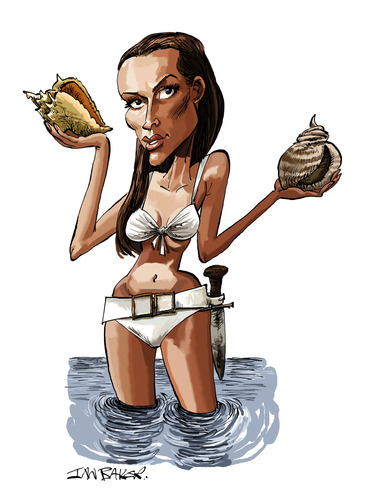 There was one thing I did go back and change though, and that was the cover artwork. The original cartoon, I felt, could be a lot better, so I did it again. However by this time the old cover was appearing all over the internet with the old cover cartoon
There was one thing I did go back and change though, and that was the cover artwork. The original cartoon, I felt, could be a lot better, so I did it again. However by this time the old cover was appearing all over the internet with the old cover cartoon
There is another book I am thinking of resurrecting at the moment – One I started working on about six years ago. That book will have to be totally started from scratch, as having recently seen the original work, I know the cartoons need to be drawn better. I think all of us, as cartoonists, never stop improving our skills and evolving.
I’m sure one day I will pick up the “Codgers’ Kama Sutra” and wish I could re-draw the illustrations or add a new chapter. But for now, I’m very happy with the finished book!
Thanks for your time!
]]>In memory of the September 11 attacks 2001 we would soon like to feature some related cartoons on toonpool. com . Also, we would like to make a selection of 15 cartoons to be shown on germans online magazine stern.de next week. Please upload your work if you are interested in participating.
It would be helpful to give your work a “September11″ tag and add the cartoon to the 9/11 collection.
Thank you very much.
Cartoon used for the blog preview by artist ombaddi
]]>
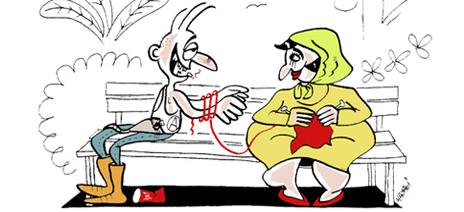
Hayati Boyacıoğlu is a Turkish-German cartoonist. His cartoons frequently deal with issues of integration and cultural relations.
Hayati, in the past weeks you posted several cartoons showing couples – most of them very unlikely ones. Where did that come from?
![]() You will see couples anywhere you go – on the subway, at a doctor’s office.. That’s when I start wondering what they do, what they tell each other, how they found each other, why him, why her… There’s hardly any subject more rewarding for a cartoonist than relationships.
You will see couples anywhere you go – on the subway, at a doctor’s office.. That’s when I start wondering what they do, what they tell each other, how they found each other, why him, why her… There’s hardly any subject more rewarding for a cartoonist than relationships.
Was there any particular couple that started the whole thing?
Yes. Back in 1995 I published a book that had a couple on the cover page – a punk and a Turkish woman with a headscarf. I saw those two sitting on a bench at Moritzplatz. In a city like Berlin these kinds of things are actually quite frequent.
You make up names for all of your couples…
Yes, but I only started doing this recently. It adds a certain warmth to a cartoon. I also want to add a common element to my couple drawings: it’s meant to show that we are all human beings, even though some people have a hard time accepting that.
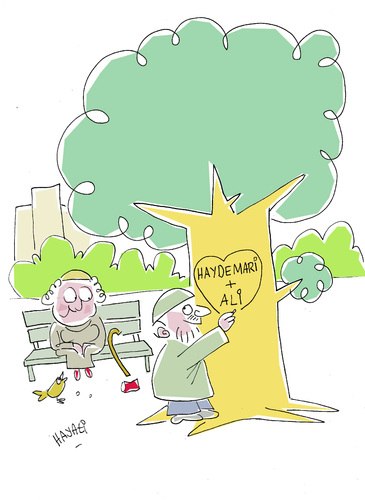 For example, I did this cartoon about “Heidemarie and Ali”. In that one Ali cuts both their names into a tree. These kinds of things just have to happen if you take into account that the first Turkish migrants came to Germany in 1960. It’s well possible that a Turkish man who arrived back then fell in love with a German. But in everyday life you see these things way too rarely.
For example, I did this cartoon about “Heidemarie and Ali”. In that one Ali cuts both their names into a tree. These kinds of things just have to happen if you take into account that the first Turkish migrants came to Germany in 1960. It’s well possible that a Turkish man who arrived back then fell in love with a German. But in everyday life you see these things way too rarely.
You were born in Istanbul and your wife is from Bremerhaven. Does you own experience influence your couple cartoons in any way?
Sure. We have known each other since 1978, when she was 14 and I was 17. I asked her to teach me German… She still does.
You also do political cartoons, say, about famine in Somalia..
There is a kind of scheme behind that. I will draw a number of “bourgeois feelgood cartoons” and then I will do one about starving Somalian children.
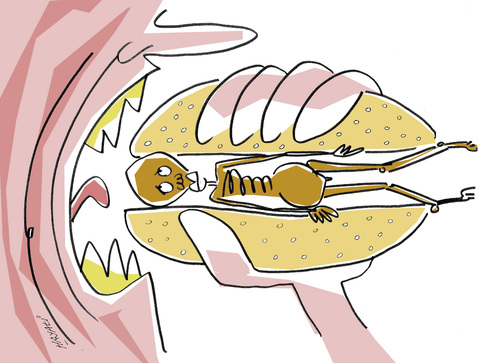 Do you draw it in that order or do you keep back the grisly ones to use them in the proper moment?
Do you draw it in that order or do you keep back the grisly ones to use them in the proper moment?
Sometimes I think about trying to control this.. but there’s no real need to. Life does that by itself. I will draw something about couples switching clothes and all of a sudden my routine is interrupted by a sinking ship with 20 refugees aboard and other people doing nothing. You just have to draw something about that.
Is there any agenda behind your cartoons?
Dario Fo once said that if you want to make people understand something you have to make them laugh. Because that’s when their brains will open up and you can add knowledge.
The problem with toonpool.com is that the audience is composed of artists, of satirists. There’s no need to teach each other. On Facebook, for example, I will get very different reactions to my cartoons.
Several of your political cartoons deal with Turkish issues, for example with the recent elections. Can you tell a bit about Turkish cartoons in general?
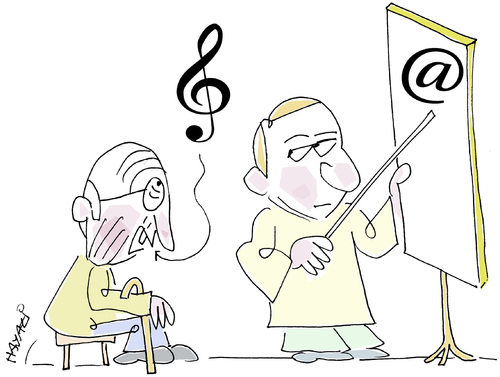 In Turkey, the newspapers’ headquarters are mostly based in Istanbul. Except for about four pages of the international issues, everything’s produced there.
In Turkey, the newspapers’ headquarters are mostly based in Istanbul. Except for about four pages of the international issues, everything’s produced there.
So, those international issues will hardly produce their own editorial cartoons. Perhaps because it’s hard to control editorial cartoons. In effect, most editorial cartoons deal with Istanbul issues and hardly ever with things happening anywhere else.
Are there any differences to German cartoons when it comes to humor?
Yes. There are basically two types. The first one does not really exist in Germany. It’s satirical magazines that are very cheap. Examples would be Leman or the now-defunct Gırgır.
German Titanic or Eulenspiegel cost 4 Euros each and, if you want to understand them you have to be well-read, know a thing or two about satire, etc. It’s not for everyone.
The Turkish magazines cost something like 25 cents and they are not too “high-brow”. Satire should be folksy and accessible for everyone – populist in a good way. I am trying to keep things simple, even though it doesn’t always work. Maybe that’s a point where I’m influenced by Germany.
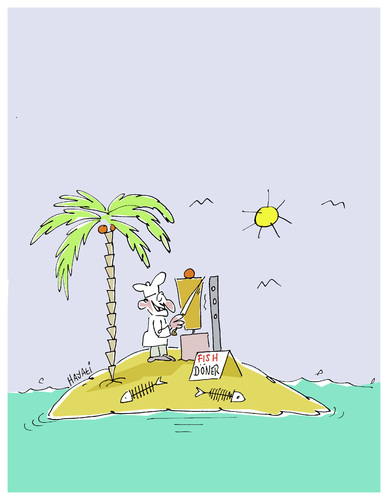 Isn’t there a danger that populist cartoons can very quickly turn to propaganda?
Isn’t there a danger that populist cartoons can very quickly turn to propaganda?
I don’t think so. Readers would notice this very quickly. And they will punish magazines by simply not buying them the following week.
How about the second type of cartoons?
Those are more artistic and don’t use captions. That’s one thing that sometimes poses problems for cartoonists from Yugoslavia, Romania, Bulgaria, and the like. Germans always use captions. Even on toonpool.com you need to fill in a title but, you know, the drawings are supposed to speak for themselves.
Where is this type usually published?
Artists will publish books or display them at exhibitions. There were a couple of more sophisticated satire magazines, but those never really worked.
Are you still in contact with cartoonists from Turkey?
Yes, I am. Thanks to toonpool.com, among others. I started drawing back in school, when Gırgır was still around [editor's note: Gırgır was originally published between 1972 and 1989].
I met a lot of like-minded people then. Some of them – like Erdogan Karayel - I met again in Germany. Others I found online. And, of course, I met a lot of new people.
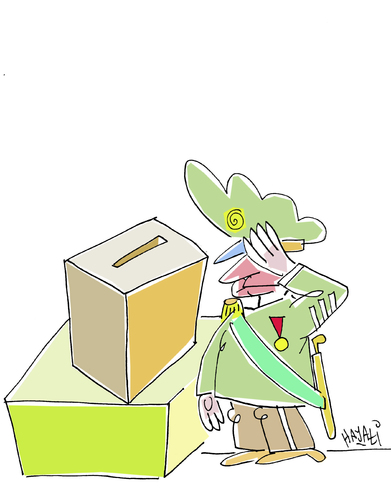 What are the main differences in opinion between “exiles” and artists back in Turkey?
What are the main differences in opinion between “exiles” and artists back in Turkey?
It always depends on how long you have been abroad. If you left only two or three years ago you can live here as you would have back in Turkey. You don’t really speak the language and you can stay at home and watch Turkish television. If you have been here for 20 or 30 years, though, if you keep your eyes open, you will change.
Which of your own attitudes, would you say, have changed?
I see some things differently. Some things that would be taboo over there, I don’t really mind anymore. When the Turkish military’s chiefs of staff resigned, mine was one of very few cartoons on this topic.. and it applauded the fact that they gave in to the power of the people. I hardly got any reactions on that one from Turkey.
Thanks for your time!
]]>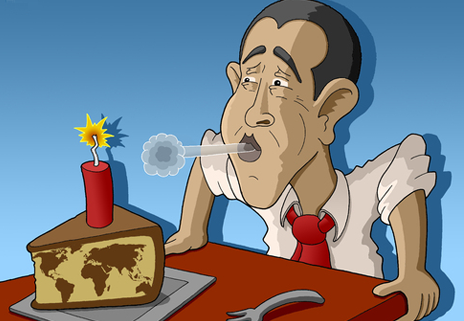
Barack Obama turned fifty on August 4. I guess the most common reaction to this piece of information is something like “Well.. good for him.” Or that’s what I was thinking, anyway. Still, it made me look up the Obama cartoons on toonpool.com (full list here). While doing so I noticed, that Mr. Obama rose to global fame about the same time that our site went online and has, in a way, accompanied us ever since
The first Obama cartoon was posted on January 9, 2008, not quite two months after toonpool.com was opened to the public. I have to admit that I’m not really sure about this particular cartoon’s meaning. Still, browsing through over 1700 Obama cartoons brings up a few memories and gives some insight into the way in which editorial cartoons and caricatures develop. If you would like to take a look into three years of political cartoons, here’s a rough timeline. [Unfortunately, the links in the titles are not permanent - things will change as soon as new Obama cartoons are added, but everything should be fine for couple of days]
Phase One : Democratic Primaries (~Januar-June 2008) [Wikipedia]
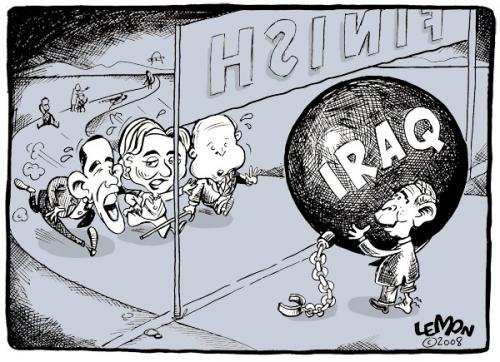 A lot of fierce battles between Obama and Clinton here. I really liked the Monty Python cartoon. Some apparently thought that McCain would profit from this.
A lot of fierce battles between Obama and Clinton here. I really liked the Monty Python cartoon. Some apparently thought that McCain would profit from this.
Phase Two : Obama VS McCain (~June-October 2008) [Wikipedia]
A lot of cartoons about everyone idolizing Obama here. This was also the time when he traveled to Berlin. And the time Sarah Palin showed up. On a sidenote: I remembered people talking about Obama walking on water.. but John McCain?!
Phase Three: Winning the Elections (November 2008) [Wikipedia]
Boy, were cartoonists enthusiastic about this. By January, a couple of people began to get tired of it, though.
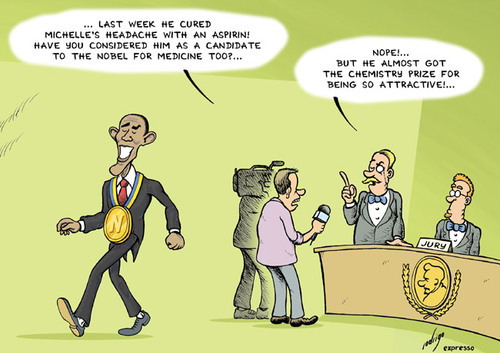 Phase Four: Obamacare (~August 2009- March 2010) [Wikipedia]
Phase Four: Obamacare (~August 2009- March 2010) [Wikipedia]
We have cartoons about its unsuspected difficulties, its cost, and – of course – about “death panels” (in case you forgot about those: more Wikipedia).
Phase Five: The Nobel Peace Prize (October – December 2009) [Wikipedia]
Phase Six: Nuclear Disarmament (April 2010) [Wikipedia]
There weren’t too many bad things people had to say about New START.
Phase Seven: The BP Spill (April-July 2010) [Wikipedia]
The “walking-on-water” thing was used a couple of times here. By the way.. does anyone know what things are like on the Gulf Coast?
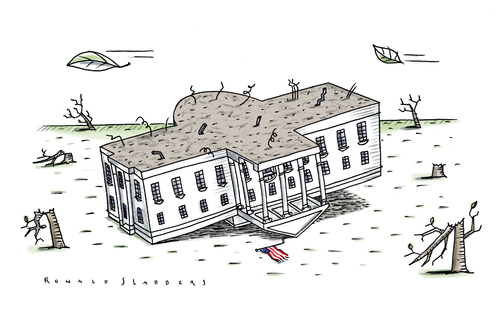 Phase Eight: Midterm Elections (November 2010) [Wikipedia]
Phase Eight: Midterm Elections (November 2010) [Wikipedia]
People who hadn’t heard about the Tea Party movement definitely did after November 2.
Phase Nine: Osama Bin Laden (May 2011) [Wikipedia]
If we have learned one thing from this, it’s that “Obama” sounds almost like “Osama”.
Phase Ten: The Debt Ceiling (~July-August 2010) [Wikipedia]
It was a wild ride, but we are safe now, right?
title image by Tjeerd Royaards
]]>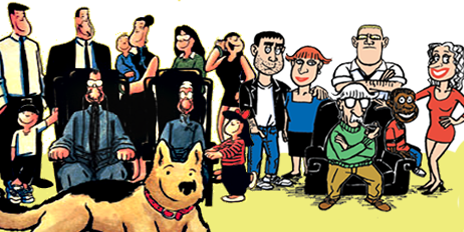
Cheah Sin Ann – also known as both “Cheah” and “Sinann” – was born in Malaysia and currently lives in Singapore. In 1986 he started drawing a strip called “The House of Lim” for the Straits Times, Singapore’s largest English language newspaper.
 Sin Ann, you write that you created the first “Singapore-made English language daily cartoon strip”…
Sin Ann, you write that you created the first “Singapore-made English language daily cartoon strip”…
Yes, when I first joined the Straits Times, there weren’t any locally-made strips. Perhaps because those were still the early days. I pitched the idea of a series on a Chinese family and the editors bought it. There have been a number of works created in Singapore since.
If there were no local cartoons, what others were there?
If I’m not mistaken, most of the cartoon strips were from the American syndicates – stuff like Garfield, and the Peanuts.
How many different strips do you draw at the moment?
Currently, I maintain two working cartoon strips. The daily Billy & Saltie and the weekly Event Horizon. I also post that one on toonpool.com, well, weekly.
I have a third which I’m keeping under wrap for the most part for now. It’s called Beijing Life and about a modern ‘Mad About You’ type couple in the Chinese capital.
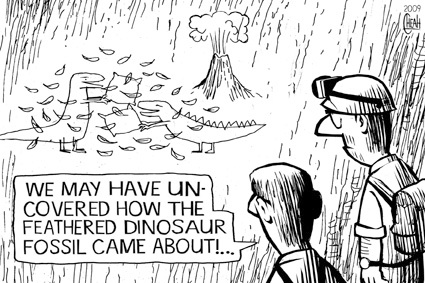 Singapore sounds like a melting-pot of different cultures. Does this figure into your cartoons in any way?
Singapore sounds like a melting-pot of different cultures. Does this figure into your cartoons in any way?
Yes, Singapore has many cultures I think mainly because it was a major port for the trading routes in the old days and the various immigrants settled here.
I don’t know if they figure in my cartoons but I think humor is universal and culture only provides the platform. Case in point, my strip, Murphy’s In-Law dealt with Irish culture but the jokes were essentially still jokes you and I can identify with. [characters from this strip are on the right side of the title image]
How did you decide to do strips about Irish and Chinese families? Is there any personal connection? Your own name sounds Malay to me… I mighty be totally off on that last one, though.
My name’s actually Chinese – Cheah Sin Ann – but my last company contracted it to Sinann Cheah for their computer system. This would explain the Chinese family strip. [characters from "The House of Lim" are on the left side of the title image]
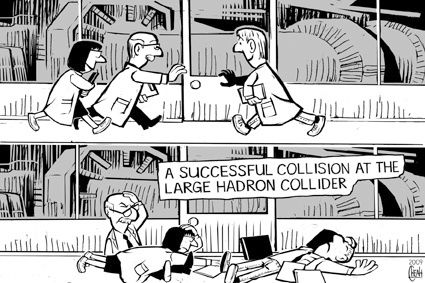 As for Murphy’s In-Law, my wife is from County Kerry, Ireland. So I had plenty of info about Irish culture. And Guinness.
As for Murphy’s In-Law, my wife is from County Kerry, Ireland. So I had plenty of info about Irish culture. And Guinness.
There are are four official languages in Singapore how does that affect your everyday life? Do you switch between languages?
Effectively, I speak English, Malay and a dialect of Chinese and yes, I use those languages in the restaurants at the markets, etc..
Have you ever drawn comics in another language?
No, although I would very much like to. And that’s an interesting point you’ve raised: Would humor in English work just as well in German, French or Spanish? Would the irony or sarcasm be lost in translation? Even American humor isn’t the same as British humor.
How does this work in a multicultural situation? Do you see any differences in humor between the ethnic groups of Singapore?
All the races speak Singlish besides their mother tongue and we have our own brand of humour that takes an outsider a while to get. It’s full of local slang and innuendos. The same as in other countries, I guess.
The universal point i was trying to make is that all cultures have their hangups with mother-in-laws, shopping, people who talk too much, bad drivers, etc. I like to show how a particular group deals with them, preferably with a nice twist.
You mentioned a new strip about life in Beijing. What kind of market are you aiming at with that?
I’m really not sure about Beijing Life, to be honest. Unless I get some help from the inside and the outside. It won’t be easy to introduce the cartoon and, more importantly, the humor, to China. From what I know, there’s no such thing as irony there.
Thanks for your time!
PS: Samples from “House of Lim” and Sinann’s other strips can be found on his website.
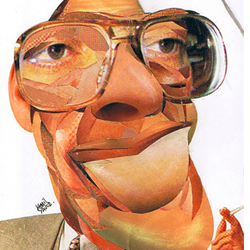 “Turkey Types” By Kamil Yavuz
“Turkey Types” By Kamil Yavuz
Kamil Yavuz from Istanbul has created a series of photomontage caricatures of Turkish politicians. I can’t really tell if they resemble their subjects because he didn’t provide any names and because I am far from familiar with Turkish politics.
Still, these portraits look amazing – the different textures and perspectives and the blown-up details work together perfectly. Please also note the animal familiars assigned to each politician (the guy to the left has bees) If anyone knows what this is about, please drop me a line.
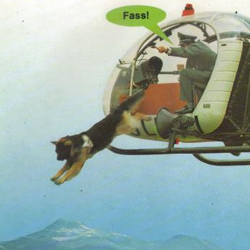 “Hundsgemein” by Andreas Prüstel
“Hundsgemein” by Andreas Prüstel
I have to admit that Mr. Prüstel is my favourite collage artist on toonpool.com. I guess it’s a mixture of his humor (by the way: the caption reads “Bite!”) and the retro feel of the collages.
The photos Prüstel uses are usually dated and slightly yellowed – if they are in color at all. Following the aesthetics of the Dada artists, these cartoons do not try to create an illusion of (sur-)reality but emphasize the incongruency of the elements pasted together. They would work great in a Terry-Gilliam-style animation.
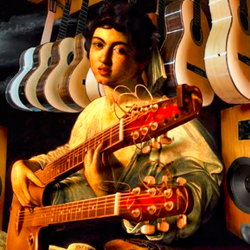 “Music Has No Age” by LuciD
“Music Has No Age” by LuciD
Romanian artist LuciD has a very different approach. The elements of his digital collages are blended together perfectly. Just look at the way he added the Ovation double-neck to Caravaggio’s Lute Player. I bet she is playing “Stairway to Heaven” and annoying the hell out of the store owner.
As with many of LuciD’s works, I wonder where he took the photos from. From my own experience I know that finding stock photos in the right angles takes a lot of time. So perhaps he takes the photos himself. Which may also take a lot of time.
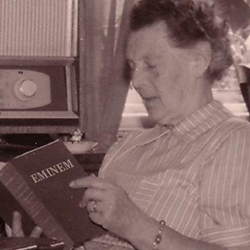 “Modern Times” by Prinzparadox
“Modern Times” by Prinzparadox
Creating this collage, on the other hand, didn’t take too long. The artist added a single word. But the minimalism makes the whole thing work. There is more here than the contrast between age groups and the questionable comedic value of totally radical senior citizens.
Please note that he book she is reading is not a book about Eminem (like, for example, as “The Way I Am” by Eminem). It’s Eminem, the book. Or the Book of Eminem. This is serious business.
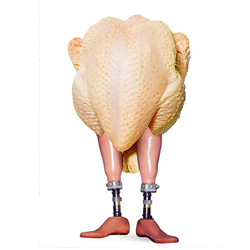 “Let’s Dance!” by Willem Rasing
“Let’s Dance!” by Willem Rasing
Not much to say here, really. It’s a chicken with prosthetic legs and it’s about to shake them. This has been proven to be funny as early as 1986.
It’s the grotesque jusxtaposition that does it. On one hand the plucked cadaver looks awkward and vulnerable, like naked people. People dancing in the nude are funny. Things dangling, and all. On the other hand it is a cadaver – dead meat (OK… poultry). And those legs.. they are meant for mutilated people. With stumps. Probably victims of land-mines, punji sticks or thalidomide. Being reminded of mortality and the fragility of our bodily integrity gives pretty much everyone the creeps.
PS: click here for a collection of photomontages , and here to see all cartoons marked as “collage” (some mislabeled images)
PPS: You can now follow me on Twitter
]]>